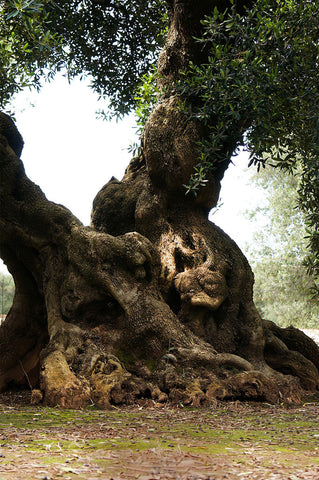The history of the olive tree

With the affirmation of the Roman Empire, olive oil assumed a strategic function in the field of trade and exchange activities between different peoples and the studies on the good cultivation of the olive tree were also intensified. Illustrious men of culture, such as Pliny the Elder , Cato , Columella , offered a notable contribution of knowledge on the cultivation of olive trees. .
The presence of the olive tree during the early Middle Ages was rather scarce. Isolated olive trees among the cultivated fields or among the grazing expanses mainly concerned areas under direct noble management.
However, oil was not a rich commodity and its trade was also conditioned by the bulky containers with which it was transported.
With the Byzantineization of southern Italy, a new cultural framework was determined, but in the meantime traditional crops were also restored, such as the olive tree and the vine.
The dark centuries of the fall of the Roman Empire were followed by a period of renewal also for olive growing, in the era of municipalities and monasteries.
The oil trade resumed by the Venetian navigators. The ports of Brindisi, Gallipoli, Otranto and Taranto became the destination of ships carrying enormous quantities of oil; as well as Venetian, Tuscan, Genoese, Russian, English and German warehouses are installed there.
The olive oil trade assumed such importance that in 1559, the Spanish viceroy Parafran De Rivera ordered the construction of a road linking Naples to Puglia, with bifurcations for Calabria and Abruzzo to allow faster transport of the 'olive oil.
The first decades of the seventeenth century mark, even in the Terra d'Otranto, the culminating moment of that phase of prosperity that had characterized the whole of the sixteenth century, but they also record the beginning of a long crisis, which will then become irreversible for the whole of the South.
The deterioration of climatic conditions and the long cycle of low temperatures that hit Europe after 1600 were the causes that determined the crop crisis and exceptional famines.
Fortunately, the crisis recorded in the mid-seventeenth century was not of long duration and already in the eighties of the seventeenth century a strong recovery of the agricultural economy could be recorded, with the olive grove once again dominating the general landscape. agricultural.
Since then the cultivation of the olive tree has only known periods of expansion and the cultivation techniques have been characterized by constant progress. It was the skilled hands of generations of Apulian "pruners" and "grafters" who modeled the initial wild shape of the olive tree, to transform the wooded areas into well-tended and regular crops, in order to enhance the productive function of the plants. time to contain the high costs of cultivation and harvesting.
A hard work for centuries, which has been incorporated into a great natural heritage of incomparable beauty, characteristic of every corner of this land, so as to arouse surprise and admiration in the visitor.
" Puglia would lose all identity if the olive tree were missing from its splendid panorama ".



